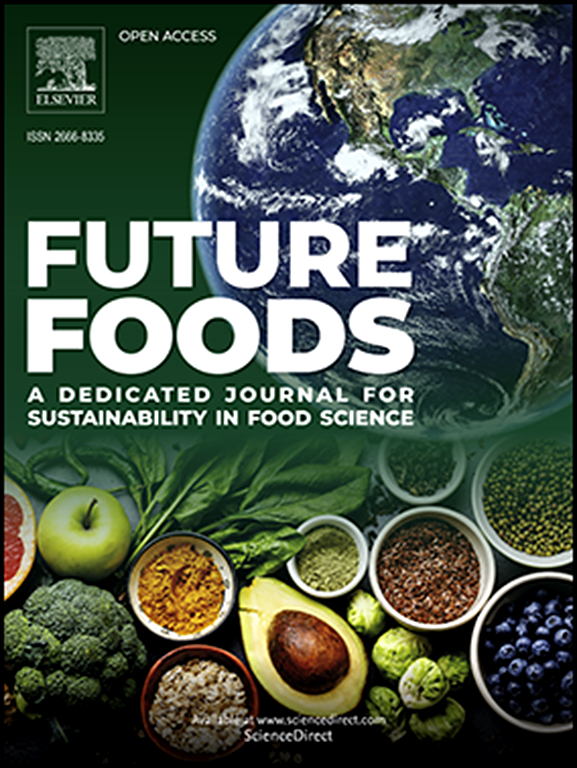Role of egg white protein gelling capacity on the processability and properties of compression-moulded films
IF 8.2
Q1 FOOD SCIENCE & TECHNOLOGY
引用次数: 0
Abstract
This study aimed to assess the impact of the gelling capacity of powdered egg white protein (EWP) on the processability and properties of compressed-moulded films. Three commercial grades of EWP with varying gelling capacities and three protein-to-plasticiser ratios were selected for film preparation. The EWP structure was characterised by FTIR and XRD, and the relative abundance of proteins was estimated using LC-ESI-MS/MS. The rheological properties of the film-forming solutions (FFS), along with the mechanical, barrier, and optical properties of resulting films, were also evaluated. The EWP samples exhibited differences in secondary structure, soluble protein content, and protein profile, which were reflected in the viscosity, consistency, and elastic modulus of the FFS, all of which increased with gelling capacity. The processability and stability of the FFS were found to depend on the appropriate combination of gel strength and protein-to-plasticiser ratio. In addition to the protein-to-plasticiser ratio, the β-turn abundance in the secondary structure of the EWP film was the parameter most strongly correlated with Young's modulus (p < 0.01). However, the barrier properties of the films were significantly influenced solely by the protein-to-plasticiser ratio (p < 0.01), with higher plasticiser content resulting in increased oxygen and water vapour permeability.

蛋清蛋白胶凝能力对压模膜加工性和性能的影响
本研究旨在研究蛋清蛋白粉(EWP)的胶凝能力对压缩成型膜的可加工性和性能的影响。选择了三种不同胶凝能力和三种蛋白质与增塑剂比例的商业等级EWP进行薄膜制备。用FTIR和XRD对EWP结构进行了表征,用LC-ESI-MS/MS对蛋白的相对丰度进行了估计。我们还评估了成膜溶液(FFS)的流变特性,以及形成的薄膜的机械、屏障和光学特性。EWP样品的二级结构、可溶性蛋白含量和蛋白质谱存在差异,这反映在FFS的粘度、稠度和弹性模量上,这些都随着胶凝量的增加而增加。结果表明,凝胶强度和蛋白增塑剂比的适当组合决定了FFS的可加工性和稳定性。除了蛋白质与增塑剂的比例外,EWP膜二级结构中的β-转丰度是与杨氏模量(p <;0.01)。然而,膜的阻隔性能仅受蛋白质与增塑剂比例(p <;0.01),随着增塑剂含量的增加,氧气和水蒸气的渗透性增加。
本文章由计算机程序翻译,如有差异,请以英文原文为准。
求助全文
约1分钟内获得全文
求助全文
来源期刊

Future Foods
Agricultural and Biological Sciences-Food Science
CiteScore
8.60
自引率
0.00%
发文量
97
审稿时长
15 weeks
期刊介绍:
Future Foods is a specialized journal that is dedicated to tackling the challenges posed by climate change and the need for sustainability in the realm of food production. The journal recognizes the imperative to transform current food manufacturing and consumption practices to meet the dietary needs of a burgeoning global population while simultaneously curbing environmental degradation.
The mission of Future Foods is to disseminate research that aligns with the goal of fostering the development of innovative technologies and alternative food sources to establish more sustainable food systems. The journal is committed to publishing high-quality, peer-reviewed articles that contribute to the advancement of sustainable food practices.
Abstracting and indexing:
Scopus
Directory of Open Access Journals (DOAJ)
Emerging Sources Citation Index (ESCI)
SCImago Journal Rank (SJR)
SNIP
 求助内容:
求助内容: 应助结果提醒方式:
应助结果提醒方式:


